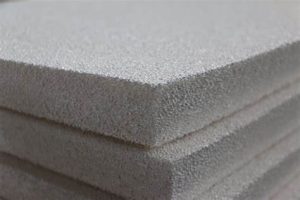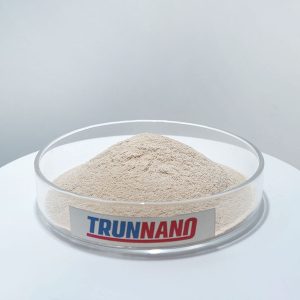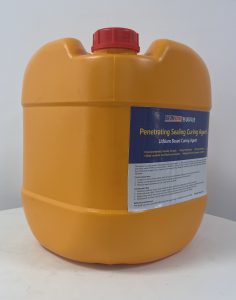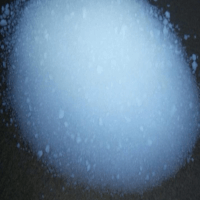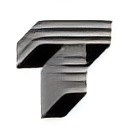Professional solutions on concrete addtives, Concrete Foaming Agent, Superplasticizer, CLC Blocks Additives, and foaming machine
1. The Chemical Structure of Aerogel Coatings
1.1 What Are Aerogel Coatings?
Aerogel coatings are a revolutionary class of advanced materials that combine the nanoporous network structure of aerogels with the functional versatility of coatings. These coatings are engineered to provide unmatched thermal insulation, chemical resistance, and mechanical durability, making them ideal for applications ranging from building energy conservation to aerospace engineering. At their core, aerogel coatings are composed of ultrathin, lightweight layers of silicabased or polymer-derived aerogel particles suspended in a matrix that enhances their adhesion, flexibility, and applications-specific properties.

The term “aerogel” originates from its gas-filled porous structure, where over 80% of the volume is composed of air, giving it the nickname “frozen smoke.” This unique architecture, combined with a high surface area (up to 2000 m²/g) and extremely low density (as low as 0.002 g/cm³), allows aerogel coatings to block heat transfer through conduction, convection, and radiation with unprecedented efficiency.
1.2 How Is the Chemical Structure of Aerogel Coatings Designed?
The chemical structure of aerogel coatings is meticulously engineered to balance performance, cost, and scalability. Most commercial aerogel coatings are based on silica aerogels, which are synthesized from silicon precursors like tetraethyl orthosilicate (TEOS) through sol-gel processes followed by supercritical drying to preserve the nanostructure. This method eliminates the shrinkage and cracking typically associated with traditional drying techniques.
To enhance functionality, aerogel particles are often embedded in polymer matrices (e.g., polyurethane, epoxy) or combined with inorganic binders (e.g., alumina, zirconia). These matrices not only improve mechanical strength but also tailor the coatings for specific applications—such as fire resistance, UV protection, or anticorrosion properties. For instance, carbon aerogel coatings are developed for high-temperature environments, while organic-inorganic hybrid coatings offer superior flexibility and weather resistance.
2. Core Characteristics of Aerogel Coatings
2.1 Physical and Chemical Properties
Aerogel coatings exhibit a suite of extraordinary physical and chemical attributes that set them apart from conventional insulation materials:
UltraLow Thermal Conductivity: With a thermal conductivity as low as 0.013 W/m·K, aerogel coatings outperform traditional insulators like polystyrene (0.033 W/m·K) and mineral wool (0.040 W/m·K). This makes them ideal for reducing heat loss in buildings, pipelines, and industrial equipment.
High Porosity and Low Density: The 9099.8% porosity of aerogel coatings ensures minimal weight and thickness while maintaining structural integrity. A 1cmthick aerogel coating can provide the same insulation as 20 cm of conventional material.
Chemical Inertness: Resistant to acids, alkalis, and UV degradation, these coatings remain stable in harsh environments, extending their lifespan and reducing maintenance costs.
Mechanical Robustness: Despite their fragile appearance, aerogel coatings can withstand high compressive strength (up to 5 MPa) and thermal shock (from 200°C to 650°C) without cracking or deforming.
| Test items | Unit | Data |
| Appearancestatus | White Paste | |
| Constructionmethod | Scraping, Smearing, Spraying | |
| Thermal conductivity | W/(m.K) | 0.035 |
| Density | g/cm³ | 0.6±0.02 |
| Adhesionstrength | MPa | ≥0.6 |
| Dry filmthickness | mm | ≥2 |
| Material consumption | L/m² | 1(2mmThickness) |
| Fire rating | A2/B1 | |
Product parameters of thermal insulation middle layer coating for construction
2.2 Functional Capabilities
Beyond their physical and chemical properties, aerogel coatings offer transformative functional capabilities:
Thermal Shock Resistance: Their ability to endure rapid temperature fluctuations makes them suitable for applications like rocket nozzles, solar panels, and high-temperature furnaces.
Acoustic Damping: The porous structure absorbs sound waves, reducing noise pollution in buildings and industrial settings.
Environmental Barrier: Aerogel coatings act as vapor barriers, preventing moisture ingress in roofs, walls, and pipelines, thereby mitigating mold and corrosion.
Smart Responsiveness: Emerging technologies integrate phase-change materials into aerogel coatings, enabling dynamic thermal regulation based on ambient conditions.
3. A New Choice for Building Energy Conservation: The Outstanding Performance of Aerogel Coatings in Wall Insulation
In the fight against climate change, energy-efficient buildings are no longer a luxury but a necessity. Aerogel coatings have emerged as a game-changer in this domain, offering a revolutionary solution to the age-old problem of heat loss through walls.
3.1Why Traditional Insulation Falls Short
Conventional insulation materials like fiberglass, foam boards, and cellulose face critical limitations:
Thickness Constraints: To achieve adequate R-values, these materials require thick layers, encroaching on usable space.
Moisture Vulnerability: Fiberglass and cellulose degrade when exposed to humidity, compromising insulation performance.
Environmental Impact: Many synthetic insulators release toxic fumes when burned, posing fire safety risks.
3.2How Aerogel Coatings Redefine Efficiency
Aerogel coatings address these challenges with breakthrough advantages:
SpaceSaving Design: A 2mmthick aerogel coating can replace 10 cm of traditional insulation, freeing up valuable interior space.
AllWeather Performance: Their hydrophobic nature (99% water repellency) ensures consistent thermal efficiency in wet or humid climates.
Fire Safety: Classified as Class A fire-resistant materials, aerogel coatings do not support combustion, providing critical safety in residential and commercial structures.
Cost Effectiveness: While initial costs may be higher, their longevity (10+ years) and energy savings (up to 50% reduction in heating/cooling costs) deliver a rapid return on investment.
RealWorld Impact
Case Study 1: A residential project in Scandinavia used aerogel coatings to retrofit existing walls. Post-application, energy bills dropped by 40%, and indoor comfort improved significantly.
Case Study 2: In China, a commercial building integrated aerogel coatings into its HVAC system, achieving ISO 24369 compliance for net-zero energy consumption.
4. Diverse Application Domains of Aerogel Coatings
The versatility of aerogel coatings extends far beyond building insulation, revolutionizing industries with their multifunctional performance:
4.1. Renewable Energy Systems
Solar Thermal Collectors: Aerogel coatings on solar panels reduce heat loss, increasing energy output by 1520%.
Wind Turbine Blades: Lightweight, durable coatings protect blades from erosion and extreme temperatures.

4.2. Transportation
Electric Vehicles (EVs): Applied to battery casings, they prevent thermal runaway and extend battery life.
Rail and Aviation: Used in engine compartments and cabin walls for noise reduction and fire safety.
4.3. Industrial Applications
Pipeline Insulation: Protects oil and gas pipelines from freezing in arctic conditions.
Refractory Linings: Withstands temperatures up to 1200°C in steel mills and glass furnaces.
5. Environmental Performance of Aerogel Coatings
In an era where sustainability drives innovation, aerogel coatings stand out for their eco-friendly credentials and safety guarantees.
Low Carbon Footprint: The production of aerogel coatings uses 30% less energy than traditional insulation, reducing greenhouse gas emissions.
Circular Economy Compliance: End-of-life coatings can be recycled or repurposed into new products, minimizing waste.
Non-Toxic Materials: Free from VOCs and heavy metals, they meet RoHS and REACH standards for environmental and human safety.
Conclusion: Embrace the Future of Insulation
Aerogel coatings represent a paradigm shift in energy conservation, combining unmatched thermal performance, environmental responsibility, and versatile functionality. Whether you’re a builder, engineer, or policymaker, these coatings offer a futureproof solution to the urgent challenges of energy efficiency and climate resilience.
By choosing aerogel coatings, you’re not just upgrading insulation—you’re investing in a sustainable legacy that benefits both people and the planet.
Contact Us Today
For technical specifications, custom formulations, or bulk orders, visit our website or connect with our global team of experts. Let’s build a smarter, greener world together.
Supplier
Cabr-Concrete is a supplier under TRUNNANO of aerogel coatings with over 12 years of experience in nano-building energy conservation and nanotechnology development. It accepts payment via Credit Card, T/T, West Union and Paypal. TRUNNANO will ship the goods to customers overseas through FedEx, DHL, by air, or by sea. If you are looking for aerogel coatings, please feel free to contact us and send an inquiry. (sales@cabr-concrete.com)
Tags: aerogel coating,aerogel paint


